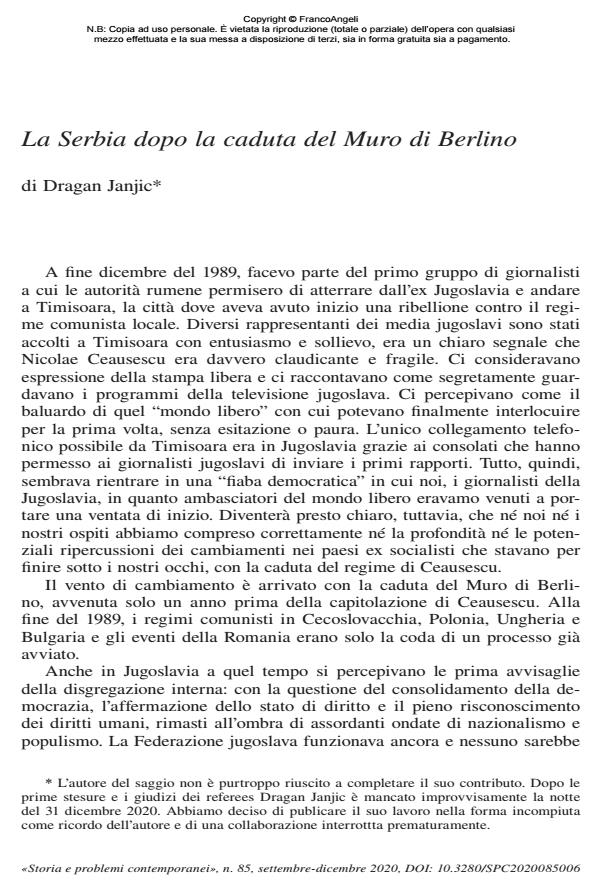La Serbia dopo la caduta del Muro di Berlino
Titolo Rivista STORIA E PROBLEMI CONTEMPORANEI
Autori/Curatori Dragan Janjic
Anno di pubblicazione 2022 Fascicolo 2020/85
Lingua Italiano Numero pagine 19 P. 92-110 Dimensione file 148 KB
DOI 10.3280/SPC2020085006
Il DOI è il codice a barre della proprietà intellettuale: per saperne di più
clicca qui
Qui sotto puoi vedere in anteprima la prima pagina di questo articolo.
Se questo articolo ti interessa, lo puoi acquistare (e scaricare in formato pdf) seguendo le facili indicazioni per acquistare il download credit. Acquista Download Credits per scaricare questo Articolo in formato PDF

FrancoAngeli è membro della Publishers International Linking Association, Inc (PILA)associazione indipendente e non profit per facilitare (attraverso i servizi tecnologici implementati da CrossRef.org) l’accesso degli studiosi ai contenuti digitali nelle pubblicazioni professionali e scientifiche
The article addresses the peculiar response of the political elite and of Serbian society in relation to the post-1989 events. In the immediate aftermath of the fall of the Berlin Wall, the Serbian authorities did not fully understand the depth and potential repercussions of the changes. However, even afterwards, the inclusion of Serbia in the "European family" did not become a clear and defined priority for the country. Analyzing the causes of this evolution the author comes to the conclusion that in the minds of many influential Serbian politicians, the Berlin Wall still exists, albeit immaterially.
Dragan Janjic, La Serbia dopo la caduta del Muro di Berlino in "STORIA E PROBLEMI CONTEMPORANEI" 85/2020, pp 92-110, DOI: 10.3280/SPC2020085006